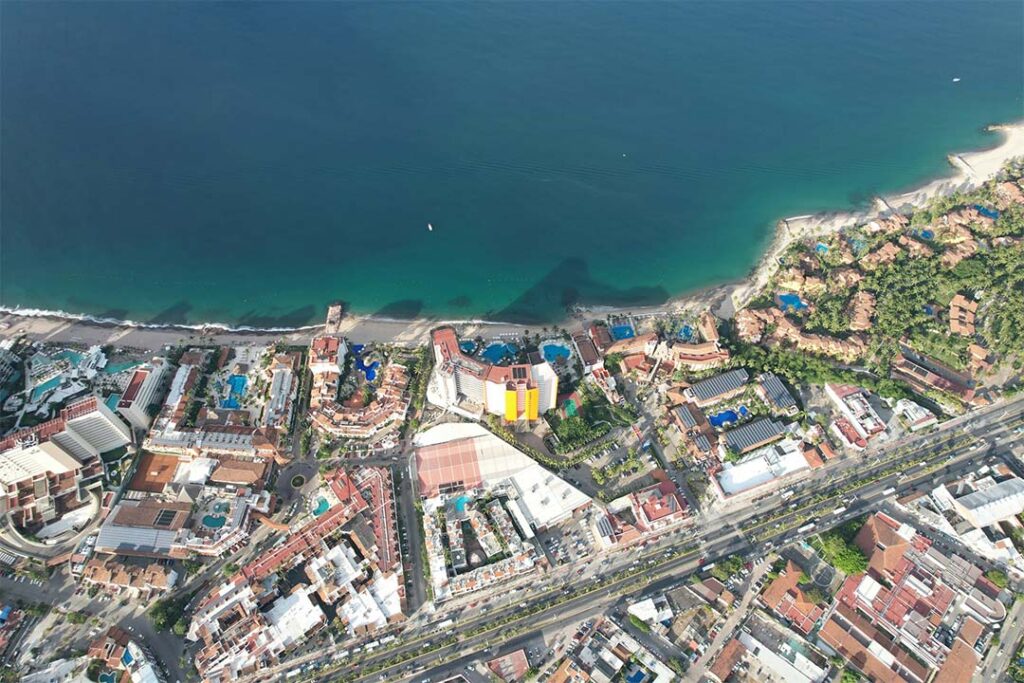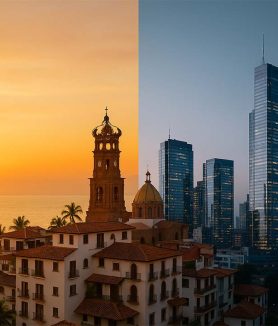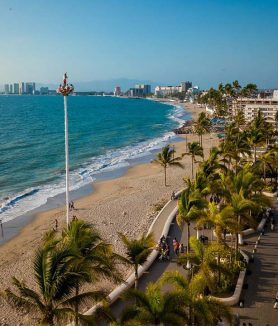The Future of Real Estate: Beyond Oversupply
The Puerto Vallarta and Riviera Nayarit real estate market has experienced rapid growth in recent years. This boom, driven by national and international investors, has established the region as one of Mexico’s most desirable destinations. However, this success has also brought challenges, such as a potential oversupply of properties, which creates uncertainty in the sector. Below, we explore the causes, implications, and opportunities this scenario offers for the future.
Causes of the Oversupply
Several factors have contributed to the imbalance between supply and demand in the real estate market. The main causes include:
- Pandemic and remote work : The shift to remote work during the pandemic led many people to relocate to tourist destinations like Puerto Vallarta and Riviera Nayarit, initially driving high property demand.
- Influx of foreign investors: Mexico has become an attractive option for international investors due to its economic stability and tax benefits.
- Deregulation and simplified procedures: Developers took advantage of streamlined processes and incentives to quickly build new projects.
- Competition among developers: The race to capture market share resulted in an oversupply of properties, particularly in the luxury and residential segments.
Implications of Oversupply
The consequences of oversupply are evident and affect various players in the market:
- Price reductions: Buyers benefit from lower property prices, but investors and developers face reduced profit margins.
- Increased inventories: Unsold properties create additional costs for developers, impacting their liquidity.
- Intense competition among agents: A saturated market forces real estate agents to work harder to close deals, reducing their earnings.
- Slowed construction: Oversupply discourages developers from launching new projects, as they aim to minimize financial risks.
Future Outlook: Building a Resilient Market
The future of the real estate market in the region will depend on the ability of stakeholders to adapt to new market dynamics. Key strategies include:
- Market segmentation:
- Focusing on specific niches, such as luxury properties, sustainable housing, or affordable homes, to attract different types of buyers.
- Adapting to new demands:
- Incorporating modern amenities like coworking spaces, green areas, smart technology, and gyms, which are increasingly valued by buyers.
- Tourism promotion:
- Strengthening tourism strategies to maintain the region as an attractive destination for international buyers.
- Government incentives:
- Implementing programs to encourage home purchases, such as tax benefits and credit plans for young buyers.
Conclusion
While oversupply presents significant challenges, it also offers an opportunity to transform the real estate market in Puerto Vallarta and Riviera Nayarit into a more efficient and diversified industry. Developers, real estate agents, and local governments must work together to implement strategies that stabilize the market, attract new buyers, and ensure sustainable growth.
With a strategic focus, the region has the potential to establish itself as a leading destination for real estate investment, offering attractive opportunities for both buyers and investors.












